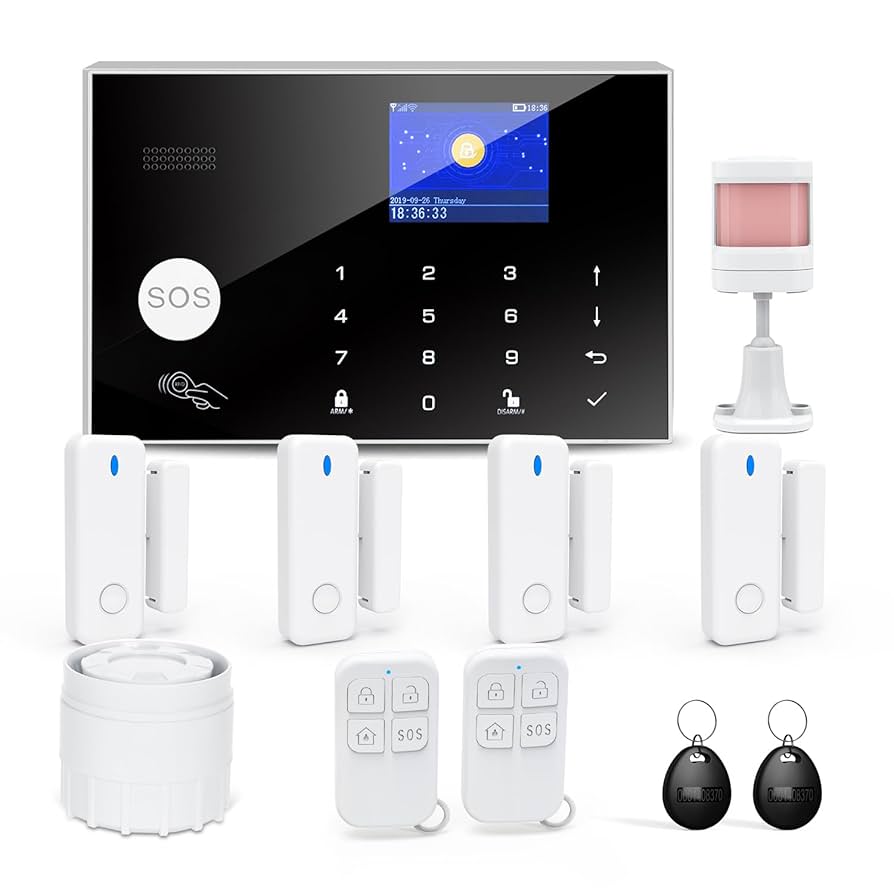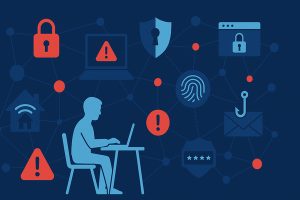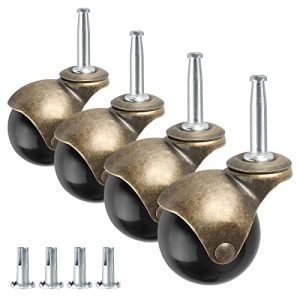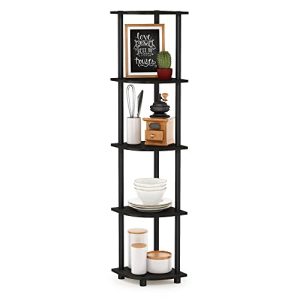Are you wondering how much a home security system really costs? Protecting your home and loved ones is important, but knowing the price can be confusing.
You want to make the right choice without overspending or missing out on key features. You’ll discover clear answers about the costs involved, so you can feel confident about securing your home. Keep reading to find out what affects the price and how to get the best value for your money.
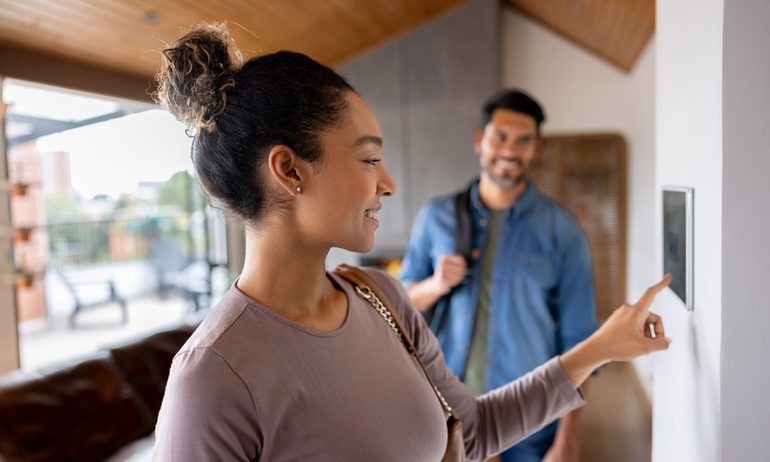
Credit: www.nerdwallet.com
Factors Influencing Home Security Costs
Understanding the factors that influence the cost of home security systems can help you make smarter choices. Prices vary widely depending on what you want and how complex your setup is. Knowing what impacts the final bill lets you balance your budget with your safety needs.
Type Of Security System
The kind of security system you choose plays a big role in the overall cost. Basic systems with door and window sensors are cheaper, while advanced setups with cameras, motion detectors, and smart home integration cost more. Ask yourself what level of protection you really need—sometimes a simple system works just fine.
Installation Options
You can either install the system yourself or hire a professional. DIY installation usually saves money but might take time and effort if you’re not tech-savvy. Professional installation adds to your cost but ensures everything is set up correctly, which can save headaches later.
Equipment Features
Extra features like HD cameras, night vision, or smart locks raise the price. Some systems also offer mobile app control or voice assistant compatibility. Think about which features you’ll actually use and which might just be nice-to-haves.
Monitoring Services
Monitoring services come with monthly fees that add up over time. Self-monitoring is cheaper but requires you to respond to alerts, while professional monitoring provides 24/7 surveillance but at a higher monthly cost. Consider how much support you want when deciding on this.
Home Size And Layout
Bigger homes need more sensors and cameras, which increases the price. Complex layouts with multiple floors or outbuildings can also require extra equipment. Take a good look at your home’s size and shape to estimate what you’ll need before buying.
Types Of Home Security Systems
Choosing the right type of home security system can feel overwhelming. Each system offers different features, installation methods, and price points that affect your overall experience and budget. Understanding the main categories will help you decide what fits your home and lifestyle best.
Wired Vs Wireless Systems
Wired systems connect sensors and cameras through cables to a central control panel. They tend to be more reliable because they don’t rely on Wi-Fi, but installation can be invasive and costly. Wireless systems use batteries and communicate via Wi-Fi or cellular signals, making them easier to install and move if needed.
Think about your home’s layout and whether you want a permanent setup or something flexible. If you have older walls or don’t want to drill holes, wireless might be the better choice. However, if you want fewer worries about signal interference, a wired system is worth considering.
Diy Vs Professional Systems
DIY systems allow you to install and monitor your security equipment yourself, often with lower upfront costs. You can customize the setup, add devices at your own pace, and avoid monthly fees. However, you’ll need to handle troubleshooting and maintenance on your own.
Professional systems come with expert installation and monitoring services, providing peace of mind if you prefer hands-off security. You pay for professional support and often a monthly subscription, but the setup is seamless. Ask yourself if you want to invest time in setup or prefer ready-to-go protection.
Smart Home Integration
Modern security systems often connect with smart home devices like voice assistants, smart locks, and lighting. This integration lets you control your security from your phone or through voice commands. It also allows automation, such as turning on lights when an alarm triggers.
Consider if you already use smart home tech or plan to in the future. Adding security to your smart ecosystem can simplify management and enhance safety. Are you ready to manage your home’s security alongside your daily smart routines?
Equipment Expenses
Equipment costs for home security systems vary depending on the devices chosen. Basic setups include cameras, sensors, and control panels, which affect the overall price. Higher-quality or smart technology devices usually increase equipment expenses.
When considering the cost of home security systems, equipment expenses are significant. They vary based on the technology and features you select. Understanding these costs helps you make informed decisions. Let’s delve into the main equipment components and their expenses.Cameras And Sensors
Cameras and sensors are essential for any home security system. Cameras monitor your home visually. They deter intruders and provide evidence if needed. Basic cameras cost around $20 to $50 each. Advanced models with night vision and motion detection range from $100 to $300. Sensors detect movement, doors, and windows opening. Each sensor typically costs between $10 and $50.Control Panels And Keypads
Control panels serve as the system’s command center. They connect and manage all security devices. Basic panels start at $50, while smart panels with touchscreens can reach $200. Keypads allow you to arm and disarm your system easily. They are often included with control panels but can cost $20 to $100 if purchased separately.Additional Accessories
Additional accessories enhance security and convenience. These include sirens, smart locks, and video doorbells. Sirens alert neighbors with loud sounds, costing $30 to $70. Smart locks offer keyless entry and range from $100 to $250. Video doorbells let you see and talk to visitors, priced between $100 and $200. These accessories add layers of protection to your home.Installation And Setup Costs
Installation and setup costs are key parts of the total price for a home security system. These costs vary depending on the method chosen and the system’s complexity. Some systems require professional help, while others allow you to install them yourself. Understanding these costs helps you plan your budget better.
Professional Installation Fees
Professional installation typically costs between $100 and $500. Experts handle wiring, mounting cameras, and system testing. This service saves time and ensures the system works correctly. Some companies include installation in the package price. Others charge extra, so check before buying.
Diy Installation Savings
DIY installation cuts costs significantly. Many modern systems come with easy instructions and wireless components. You save money on labor by setting up the system yourself. The process usually takes a few hours, depending on your skills. DIY is ideal for simple setups and small homes.
Time And Complexity Factors
Setup time depends on the system’s size and features. Large systems with many cameras take longer to install. Complex systems may need special tools or technical knowledge. Simple wireless systems install faster and with less hassle. Plan extra time for learning and troubleshooting during setup.
Monitoring Service Fees
Monitoring service fees are a key part of home security system costs. These fees cover the cost to watch your system 24/7. They ensure quick response to alarms and emergencies. Understanding these fees helps choose the right plan for your budget and needs.
Monthly Subscription Plans
Most companies offer monthly plans for monitoring services. Prices usually range from $15 to $50 per month. The fee depends on the level of service and features included. Some plans cover basic alarm alerts only. Others add video monitoring or smart home control. Monthly fees keep your system active and connected.
Contract Vs No Contract Options
Some monitoring plans require a contract, often for one to three years. Contracts may lower monthly fees but lock you in. No contract options offer flexibility but tend to cost more monthly. Choose based on your long-term plans and budget. Contracts can save money if you plan to stay long-term.
Self-monitoring Alternatives
Self-monitoring lets you watch your home with no monthly fees. You get alerts on your phone when the alarm triggers. This option cuts costs but needs you to act on alarms. It suits people who want control and don’t mind handling emergencies. Self-monitoring requires a reliable internet or cellular connection.
Hidden And Ongoing Expenses
Home security systems often come with costs beyond the initial purchase and installation. These hidden and ongoing expenses can add up over time. Knowing about these charges helps in budgeting and avoiding surprises.
Maintenance And Repairs
Security systems need regular upkeep to function well. Batteries may need replacement. Sensors and cameras can break or lose accuracy. Repairs can involve service fees or parts costs. Skipping maintenance might lead to system failure.
Equipment Upgrades
Technology changes fast. New features or better devices can improve security. Some systems require software updates or hardware replacements. Upgrades may come with extra charges. Staying up to date can increase safety but also expenses.
False Alarm Penalties
False alarms can trigger police or fire responses. Many areas charge fines for false alarms. These fees can be costly if alarms happen often. Proper training and system adjustments help reduce false alerts and penalties.
Ways To Save On Security Systems
Saving money on home security systems doesn’t mean you have to compromise on safety. There are smart ways to cut costs while still protecting your home effectively. Understanding these strategies can help you get the security you need without breaking the bank.
Bundling Services
Many providers offer discounts when you combine home security with other services like internet, phone, or cable. Bundling can significantly reduce your monthly bills because companies want to keep you as a loyal customer.
Think about your current service providers—are you already paying for other utilities? Asking about package deals could save you a surprising amount. Sometimes, just a quick call to customer service can unlock better pricing.
Seasonal Discounts
Security companies often run promotions during holidays or specific times of the year, like Black Friday or spring sales. Waiting for these sales can help you get top-tier equipment and installation at a fraction of the cost.
Have you ever checked prices around major holidays? Mark your calendar and watch for deals, especially if your current system is outdated or you’re planning a new installation.
Choosing Essential Features
Not every home needs the most advanced system with every feature available. Focus on what’s truly necessary for your lifestyle and property size.
Do you really need 24/7 professional monitoring, or would a self-monitored system suffice? Cutting out extras like video doorbells or multiple cameras can save hundreds without sacrificing core protection.
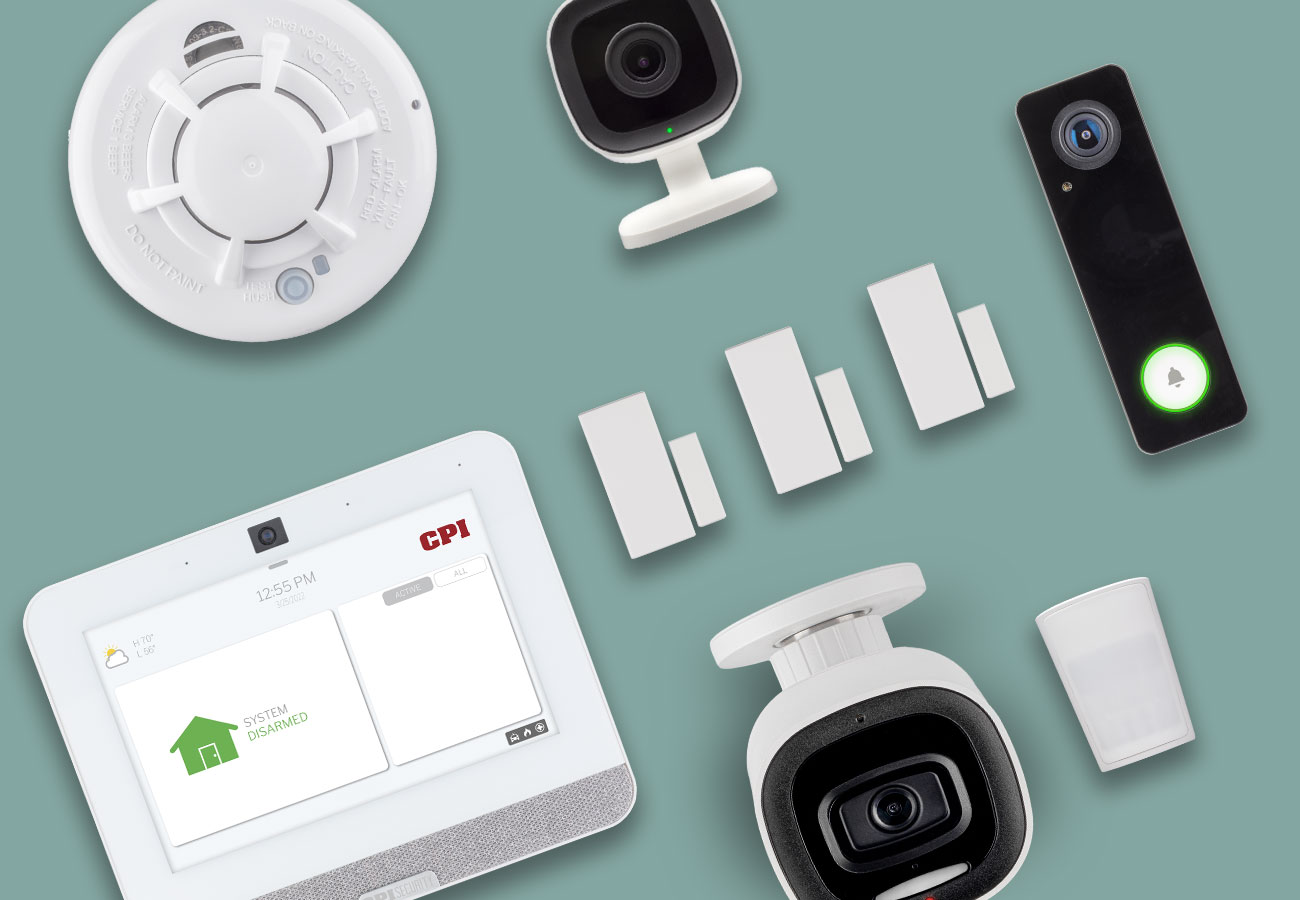
Credit: cpisecurity.com
Comparing Top Security Providers
Choosing the right home security provider affects both safety and budget. Comparing top providers helps find the best fit for your needs. Key factors include price, service quality, and customer feedback. These guide your decision for a secure home.
Price Ranges
Security system costs vary by provider and plan. Basic packages start around $20 per month. Advanced plans with cameras and smart home features can reach $60 or more. Some companies require equipment fees, while others offer leasing options. Installation fees may also apply.
- Basic monitoring: $15–$30 monthly
- Equipment purchase: $100–$500
- Installation fees: $0–$200
- Advanced packages: $50–$70 monthly
Service Quality
Reliable monitoring is vital for any security system. Top providers offer 24/7 professional monitoring with fast response times. Many include mobile apps for easy control. Look for systems with smart alerts and automation options. Some companies provide video monitoring and home automation integration.
| Provider | Monitoring Hours | Mobile App | Automation Features |
|---|---|---|---|
| Provider A | 24/7 | Yes | Yes |
| Provider B | 24/7 | Yes | No |
| Provider C | 24/7 | Yes | Yes |
Customer Reviews
Customer feedback reveals real experiences with each provider. Positive reviews often highlight quick response and easy setup. Negative reviews may mention hidden fees or poor customer service. Checking reviews on trusted sites shows overall satisfaction. Choose providers with mostly good ratings and prompt support.
- Look for consistent praise or complaints
- Note how companies handle problems
- Verify ratings on multiple platforms
- Trust providers with high satisfaction scores
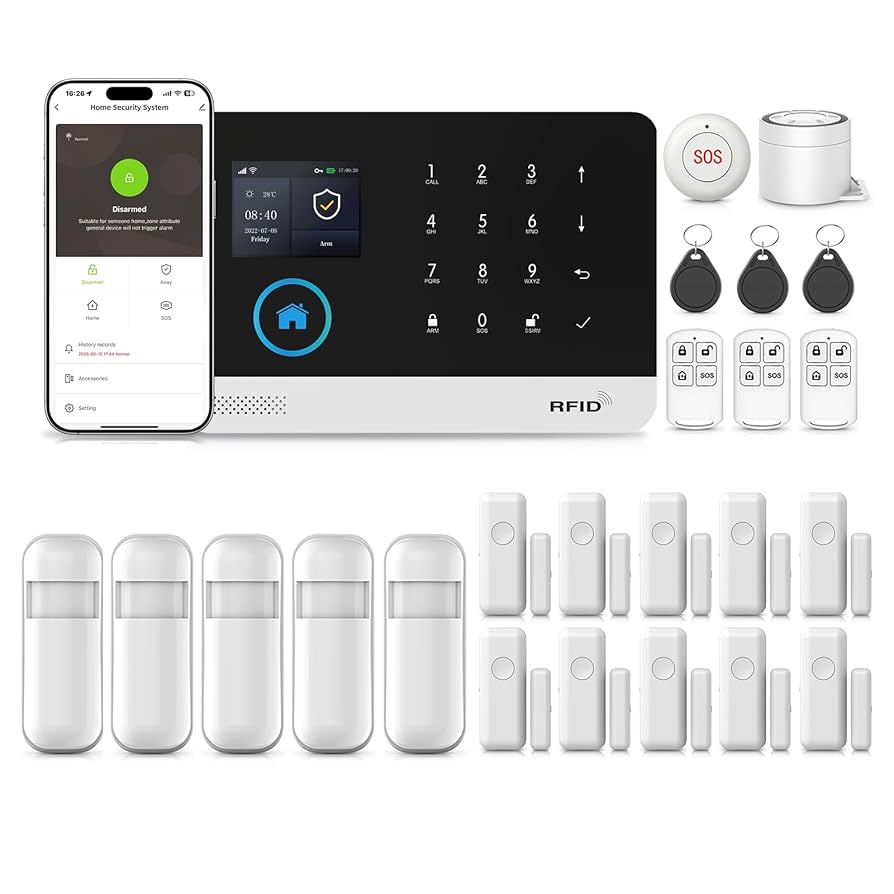
Credit: www.amazon.com
Frequently Asked Questions
How Much Does A Basic Home Security System Cost?
A basic home security system typically costs between $150 and $300. This includes essential equipment like sensors and a control panel. Installation fees may be extra, depending on the provider and setup complexity. Monthly monitoring services usually range from $10 to $30.
What Are The Ongoing Fees For Home Security Systems?
Ongoing fees mainly include monthly monitoring and maintenance costs. Monitoring fees range from $10 to $50 per month. Some providers charge extra for cloud storage or advanced features. Regular maintenance ensures the system functions properly and lasts longer.
Do Home Security System Prices Vary By Home Size?
Yes, system prices often increase with home size. Larger homes need more sensors, cameras, and equipment. This raises the initial cost and monthly fees. Customizing the system to fit your home size ensures better coverage and security.
Are Diy Security Systems Cheaper Than Professional Installations?
DIY systems generally cost less upfront, ranging from $100 to $500. They require self-installation, which saves labor fees. However, professional systems include expert installation and support. Choose based on your budget, technical skills, and security needs.
Conclusion
Home security systems vary in price depending on features and installation. Basic setups cost less, while advanced ones with cameras and smart devices cost more. Monthly monitoring fees add to the total expense. Choose a system that fits your budget and needs.
Protecting your home brings peace of mind. Think about what matters most before buying. A good system helps keep your family safe every day.


